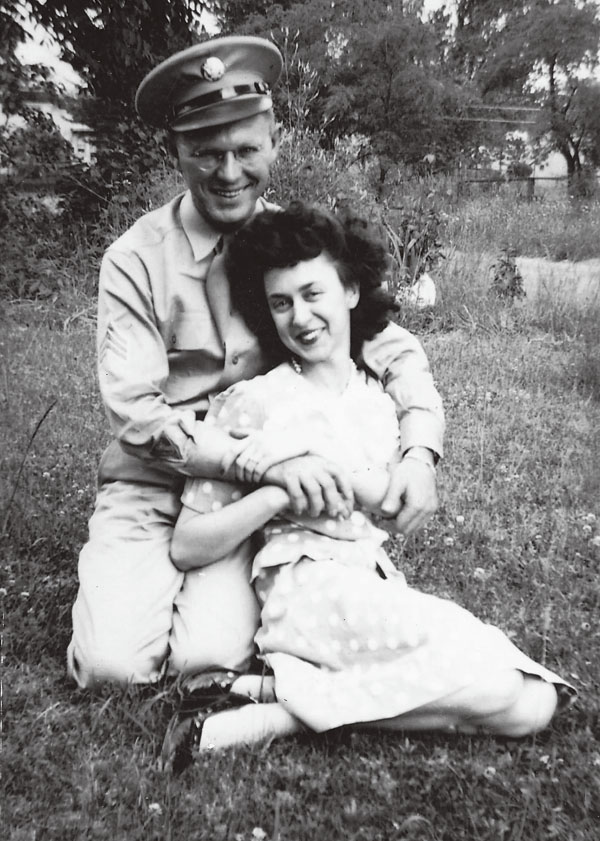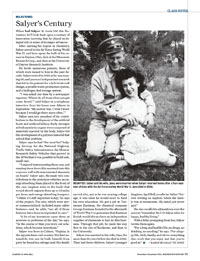Class Notes
 REUNITED: Salyer and his wife, Jane, were married when Salyer returned home after a four-year tour of duty with the Air Force
during World War II. Jane died in 2006. (Photo: Courtesy of April Bell)
REUNITED: Salyer and his wife, Jane, were married when Salyer returned home after a four-year tour of duty with the Air Force
during World War II. Jane died in 2006. (Photo: Courtesy of April Bell)When Ival Salyer ’41 turns 100 this November, he’ll look back upon a century of innovation knowing that he played an integral role in some of its major advances.
After earning his degree in chemistry, Salyer served in the Air Force during World War II, and later spent the bulk of his career in Dayton, Ohio, first at the Monsanto Research Corp., and then at the University of Dayton Research Institute.
He holds numerous patents, three of which were issued to him in the past decade. Salyer retired in 2001 as he was nearing 90, and pursued independent research that led to the patents for a hybrid aircraft design, a potable water production system, and a hydrogen fuel storage system.
“I was asked one time by a newspaper reporter, ‘Where do all those ideas you get come from?,’ ” said Salyer in a telephone interview from his home near Atlanta in September. “My answer was, ‘I wish I knew because I would go there more often.’ ”
Salyer says he’s proudest of his contributions to the development of the artificial heart and artificial kidney. Early attempts at both synthetic organs were composed of materials rejected by the body. Salyer led the development of a polymer material that solved that problem.
Salyer says he had “the most fun” helping develop for the National Highway Traffic Safety Administration the Minicar Research Safety Vehicles that proved in the 1970s that it was possible to build safe, small cars.
“I enjoyed instrumenting those cars, and running them down this racetrack into this concrete wall with instrumented dummies on board,” Salyer says. He made two contributions to the prototype vehicles: an energy absorbing foam placed in the front of the cars (engines were in the back) that would absorb impacts from up to 60 miles per hour; and energy-absorbing bumpers. “I think it’s still important today,” he says of the project. The cars, which were never commercialized, included many safety features—and, he adds, “not all of those features have been incorporated in cars.”
“A lot of my inventions came about as answers to problems of the day,” he says. “In the course of that, you work out solutions, which become inventions.”
Salyer was born in Coburn, Virginia, in the Appalachian coal country. His first automobile was one he built himself, from parts he found in a salvage yard. His family moved a lot, and as he was nearing college age, it was clear he would need to fund his own education. He got a job at Tennessee Eastman, the chemical company George Eastman founded in the aftermath of World War I to guarantee that Eastman Kodak would always have an independent supplier of chemicals to fuel its film business. Through that job, he made his way first to the city of Rochester, and then to the University.
Salyer was married to his wife, Jane, for more than 60 years before she died in 2006. They had three children. Salyer’s younger daughter, April Bell, recalls her father “forever writing on napkins when the family was at restaurants. His mind just never quit.”
She also recalls his admonitions over the years to “remember the I. O. Salyer rules for happy, healthy living.”
With a little prompting from her, Salyer recites them again.
“For a long and healthy life, no drugs, no drinking, no smoking,” he says. “For a happy life, faith, family, and above everything else, work that you enjoy and that you’re good at.” —Karen McCally ’02 (PhD)

